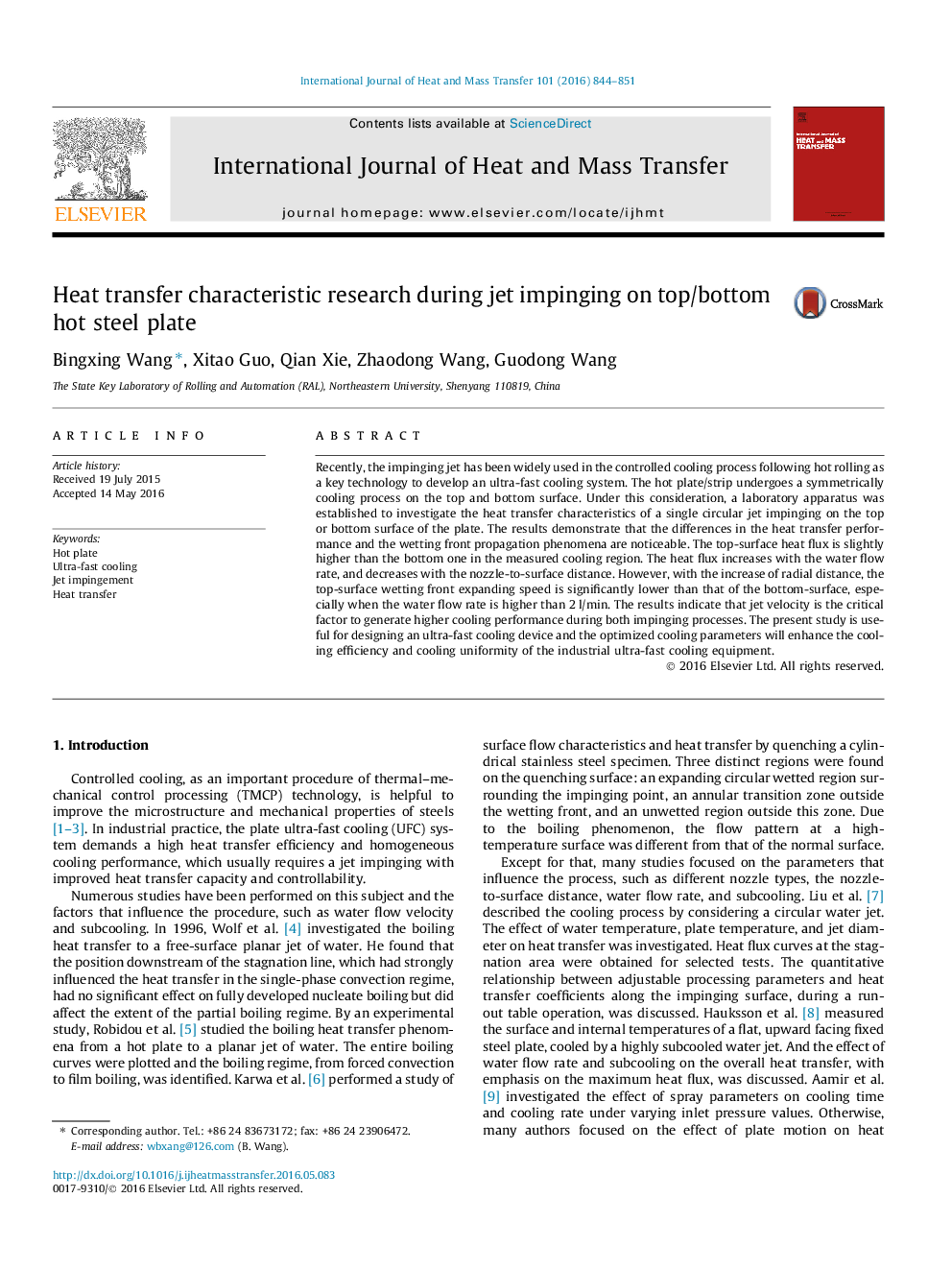| Article ID | Journal | Published Year | Pages | File Type |
|---|---|---|---|---|
| 7055396 | International Journal of Heat and Mass Transfer | 2016 | 8 Pages |
Abstract
Recently, the impinging jet has been widely used in the controlled cooling process following hot rolling as a key technology to develop an ultra-fast cooling system. The hot plate/strip undergoes a symmetrically cooling process on the top and bottom surface. Under this consideration, a laboratory apparatus was established to investigate the heat transfer characteristics of a single circular jet impinging on the top or bottom surface of the plate. The results demonstrate that the differences in the heat transfer performance and the wetting front propagation phenomena are noticeable. The top-surface heat flux is slightly higher than the bottom one in the measured cooling region. The heat flux increases with the water flow rate, and decreases with the nozzle-to-surface distance. However, with the increase of radial distance, the top-surface wetting front expanding speed is significantly lower than that of the bottom-surface, especially when the water flow rate is higher than 2Â l/min. The results indicate that jet velocity is the critical factor to generate higher cooling performance during both impinging processes. The present study is useful for designing an ultra-fast cooling device and the optimized cooling parameters will enhance the cooling efficiency and cooling uniformity of the industrial ultra-fast cooling equipment.
Related Topics
Physical Sciences and Engineering
Chemical Engineering
Fluid Flow and Transfer Processes
Authors
Bingxing Wang, Xitao Guo, Qian Xie, Zhaodong Wang, Guodong Wang,
